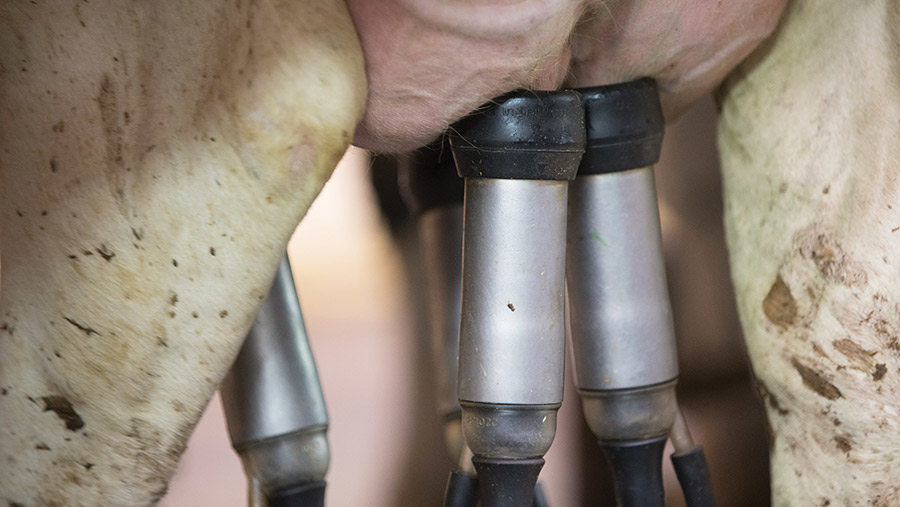Milk market values support further milk price rises
 © Tim Scrivener
© Tim Scrivener The average farmgate milk price needs to rise to 37p/litre by the end of March to reflect the returns available from the market, according to advisers.
“Markets are up because milk supply is down, and milk supply will not improve without higher milk prices,” said consultant Nick Holt-Martyn of The Dairy Group.
“Production cost inflation only serves to exacerbate the situation.”
The monthly market price equivalent (MPE) calculated by Mr Holt-Martyn is a weighted indicator of wholesale values after processing costs.
The difference between this value and the Defra farmgate price has widened to 3p/litre over the past three months, compared with 0.9p/litre over the past three years, with wholesale prices and MPE values rising much faster than farmgate prices.
See also: What to do if you get an HMRC letter after Covid-19 support
“This adds further weight to the argument that before the end of March the Defra farmgate price needs to be 37p/litre to reflect market returns,” said Mr Holt-Martyn, who puts the MPE for December at 37.1p/litre, up 6.7p/litre just in the past six months.
Other measures within different dairy market segments show an even bigger rise in the gap between these and the average farmgate price through 2021.
Arla’s on-account price for manufacturing milk breached the 37p/litre mark in January, rising to 37.58p/litre, and a price hold has been announced for February for supplies at 4.2% butterfat and 3.4% protein.
Other buyers that have declared prices for February are in a range from 33p/litre to 34.5p/litre before seasonality.
With buyers chasing tight supply, recent spot milk prices continue firm at anything from 45p/litre to 50p/litre delivered, depending on haulage distances (milkprices.com).
Tight supply outlook
It is widely recognised that high oil, gas, feed and fertiliser prices are likely to subdue production and maintain pressure on dairy markets.
The latest forecast for global production in 2022 suggests 0.6% annual growth in milk supply, equivalent to an additional 1.8bn litres of milk.
This follows a low-growth year in 2021, when estimated world milk production rose 0.9% for the year.
